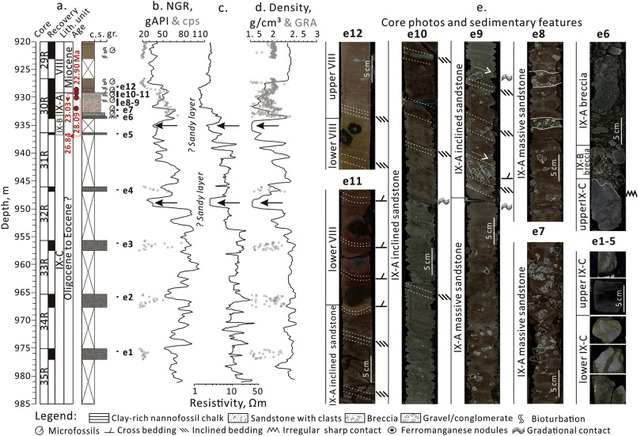Pengfei Maa*,Zhifei Liua*,Baoqi Huangb,Yulong Zhaoa,Wei Shua,Yanli Lia
a State Key Laboratory of Marine Geology, Tongji University, Shanghai 200092, China
b School of Earth and Space Sciences, Peking University, Beijing 100871, China
Abstract:
Preliminary results of the International Ocean Discovery Program (IODP) Expeditions 367/368/368X have confirmed the unique opening mechanism of the South China Sea differentiating from that of the Atlantic Ocean. However, its detailed evolution history and controlling factors spanning from the early Oligocene breakup to the early Miocene steady spreading are still unclear. Here, we conducted sedimentary, geochemical, and mineralogical analyses to a special sequence recovered at IODP Expedition 367 Site U1499 to reconstruct the Oligocene tectono-sedimentary evolution of the outermost margin. Our results indicate that a Mesozoic arc-related source primarily provided terrigenous clastics during rifting and early spreading periods in submarine canyon and ridge-flank slope environments, respectively. Late Neoproterozoic to early Paleozoic epimetamorphic fragments were enriched along with continental breakup and decreased upward in the overall retrograding sequence. Biogenous and hydrogenous contributions increased gradually and became dominant after the establishment of a stable pelagic deep basin in the earliest Miocene. Provenance and environment features demonstrate that the South China Sea was characterized by a special early spreading stage during which the outermost margin was relatively unstable and developed gravity flows to transport clastics to Site U1499. Two retrograding events occurred simultaneously with mid-ocean ridge jumps at ca. 27.0 Ma and ca. 23.0 Ma implying the tectono-sedimentary evolution of the distal margin was influenced by mantle activities.
Full Article:https://www.sciencedirect.com/science/article/abs/pii/S0025322720301298



